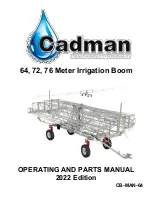
Interference-free cable routing
3.6 Bending radii and tensile strength of cables
Designing interference-free controllers
14
Function Manual, 06/2014, A5E03461486-AB
3.6
Bending radii and tensile strength of cables
Tensile strain
A high strain on the cables due to tensile forces leads to conductor material flow. The tensile
forces thus cause a change in the structure of the material and lower the conductor cross-
section. This decrease of the conductor cross-section leads, in turn, to a heating of the
conductor and premature wear of the conductor insulation.
Use the supplied cable ties to relieve the terminal points on the plugs for the I/O modules of
the product series SIMATIC S7-1500 and SIMATIC ET 200MP.
Bending radius
If you select too small bending radii when laying cables, this will cause the materials to
stretch and compress and changes the mechanical structure of the cables. The electrical
properties are impaired as a result.
Pay particular attention to the bending radii of fiber-optic cables. If the bending radii are too
small, the optical properties of the fiber-optic cable are adversely affected. Reliable
transmission is no longer guaranteed.
Summary of Contents for SIMATIC ET 200AL
Page 2: ......
Page 143: ......
Page 218: ......
Page 250: ......
Page 296: ......
Page 337: ......
Page 365: ......
Page 392: ......
Page 419: ......
Page 451: ......
Page 483: ......
Page 597: ......
Page 648: ......
Page 702: ......
Page 739: ......
Page 781: ......
Page 804: ......
Page 828: ......
Page 853: ......
Page 880: ......
Page 906: ......
Page 996: ...Diagnostics ...
Page 1121: ......
Page 1565: ......
















































